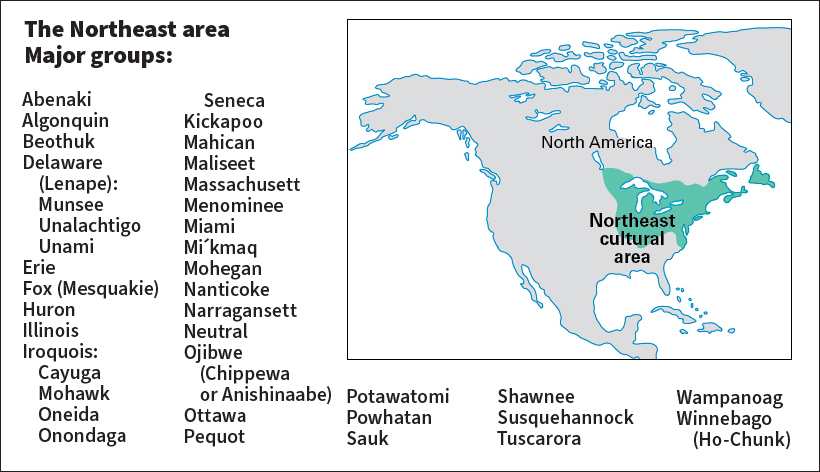Cayuga << kay YOO guh or ky YOO guh >> are a Native American people who once occupied an area near Cayuga Lake in the Finger Lakes region of central New York. Today, many of the tribe’s thousands of members live in Canada on the Six Nations Reserve near Brantford, Ontario. In Canada, the Cayuga are recognized as a First Nations people. Other Cayuga live in New York.

The Cayuga, along with the Mohawk, Oneida, Onondaga, and Seneca, formed a federation of tribes known as the Iroquois League or the Five Nations. The Iroquois established the league sometime between about 1400 and about 1600. About 1722, the Tuscarora joined the league, which then became known as the Six Nations. The Iroquois called themselves Haudenosaunee.
Like other Iroquois, the Cayuga once lived in large rectangular dwellings called longhouses. In most cases, from 6 to 10 related families lived in each house. Villages included from 30 to 150 such dwellings.
Cayuga men hunted deer, bear, and small animals. They also fished in the region’s many lakes and rivers. The women grew corn, beans, and squash and collected roots, berries, and nuts. In the spring, the Cayuga tapped trees for syrup. They used the syrup to make sugar.
The Iroquois League broke up during the American Revolution (1775-1783) because of a dispute over which side to support. The Cayuga and three other tribes sided with the British. After the Americans won the war, the Cayuga sold their reservation to New York, and most of them moved to Canada. In the late 1970’s, the Cayuga began a legal battle to recover their former land. They claimed the sale took place without approval of the federal government, making it illegal under a 1790 law.
